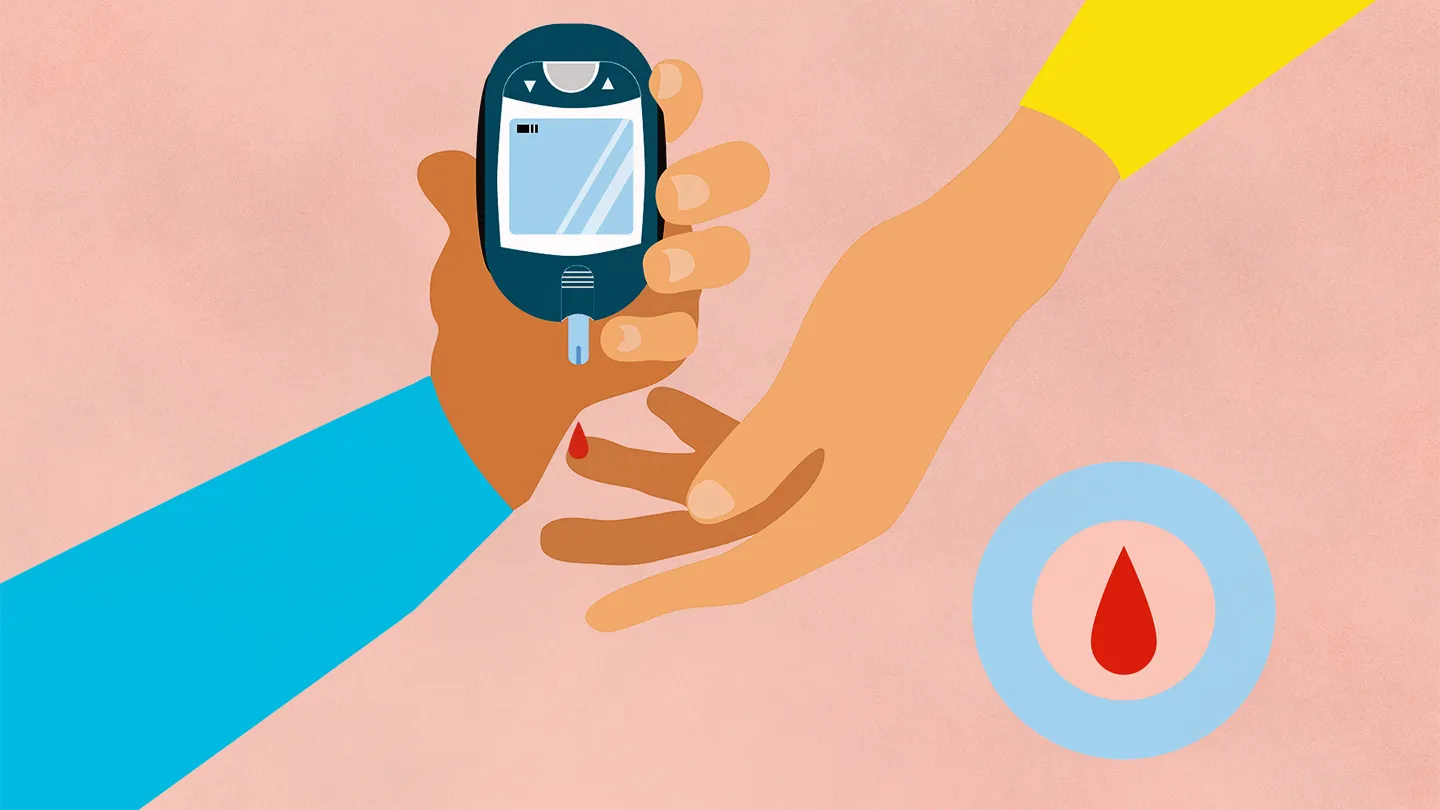
Many of us might dismiss a sudden urge to eat or unexpected fatigue as simple stress, yet these subtle changes could be your body sounding the alarm about the vital need for blood sugar monitoring.
Recognizing the Subtle Whisperers of Low Blood Sugar
Low blood sugar, technically known as hypoglycemia, occurs when the glucose level in your blood drops too low, usually below or
. The body, scrambling for energy, initiates a rapid, stress-like response. We often see the initial signs manifesting as a sudden feeling of being nervous or shaky, a quick, pounding heartbeat, and often an unusual amount of sweating despite a cool environment. You might feel a profound sense of weakness or fatigue that hits you out of the blue, making routine tasks suddenly feel like climbing a mountain. Think of that moment when you feel extremely hungry even though you ate recently, or when your lips start to tingle; these are your body’s urgent calls for glucose. In cultures like those in Turkey or the UAE, where irregular eating patterns or prolonged fasting during religious periods like Ramadan are common, recognizing these subtle signs becomes especially important.
The Blaring Alarms of High Blood Sugar
Conversely, when your blood glucose levels stay too high, a condition known as hyperglycemia, the body tries desperately to flush out the excess sugar. This mechanism gives rise to the classic, loud signs that signal it is time to act. The most common warning is increased thirst, which medical professionals term polydipsia, making you feel like you can never drink enough water. This is paired with frequent urination, known as polyuria, as your kidneys work overtime to eliminate the sugar through urine, leading to potential dehydration. You may experience persistent fatigue and a general feeling of being unwell, as your cells are starved of the energy they cannot properly absorb. In addition, blurred vision is another critical symptom, indicating that the high sugar levels are temporarily affecting the lenses of your eyes.
The Critical Role of Unexplained Weight Changes
A particularly tricky sign that your blood sugar is out of balance is an unexplained change in weight. If you find yourself losing weight even though your appetite has increased or remained normal, this is a serious red flag that your body needs to be evaluated. With hyperglycemia, your cells cannot utilize glucose for energy, forcing the body to start breaking down muscle and fat for fuel, leading to this unintended weight loss. Conversely, in the early stages of insulin resistance, which often precedes Type 2 diabetes, a person might experience unexplained weight gain, especially around the midsection. This is often linked to the modern Middle Eastern diet, which has seen a shift toward more processed foods, higher sugar intake, and an increasingly sedentary lifestyle due to urbanization, factors known to heighten diabetes risk in regions like the UAE.
Less Obvious Symptoms That Demand Attention
Beyond the well-known signs, there are several less obvious symptoms that should prompt a discussion with your healthcare provider, particularly an Internal Medicine specialist. Experiencing recurrent skin infections, slow-healing cuts or sores, or frequent episodes of thrush can be a direct result of elevated glucose levels, which create a favorable environment for bacteria and fungi to thrive. You might also notice numbness or tingling in your hands or feet, often referred to as neuropathy, which is a sign of prolonged high sugar causing nerve damage. Furthermore, feelings of irritability, mood changes, or difficulty concentrating can often be mistaken for stress or tiredness, but they can be a direct reflection of your brain not receiving the steady glucose supply it needs.
Identifying Your Personal Risk Factors
While symptoms are important, understanding your individual risk factors is our first line of defense in the management of blood sugar health. We know that a family history of diabetes, being overweight or obese, and a history of gestational diabetes are major non-negotiable risk factors. The American Diabetes Association (ADA) generally recommends starting routine screening for Type 2 diabetes at age 35 for all adults, with testing repeated every three years if results are normal. However, for those with high-risk factors, such as individuals of Arab, South Asian, or other high-risk ethnic backgrounds common in Dubai, or those with conditions like Polycystic Ovary Syndrome (PCOS) or hypertension, screening should begin much earlier and more frequently.
When to Initiate Blood Sugar Monitoring
Monitoring your blood sugar is not solely reserved for those who already have a diabetes diagnosis; it becomes a powerful preventive tool when certain risk factors are present. If you have been told that you have pre-diabetes, monitoring your blood sugar, perhaps once every week or two, especially after meals, can help you track any trends and make necessary adjustments to your lifestyle. Even if you do not have pre-diabetes, but are experiencing any of the persistent, subtle symptoms mentioned, an initial fasting blood glucose test and a comprehensive HbA1c test will give us an accurate snapshot of your metabolic health. The HbA1c test provides a three-month average of your blood sugar, which is far more revealing than a single snapshot reading.
The Metabolic Syndrome and Blood Sugar Interplay
It is crucial to look at blood sugar in the context of the Metabolic Syndrome, which is a cluster of conditions that often occur together. This syndrome includes excessive abdominal fat, high blood pressure, high triglyceride levels, and low HDL (‘good’) cholesterol. Having high blood sugar is intrinsically linked to this syndrome, and if you have been diagnosed with any of these co-existing conditions, your blood sugar is automatically at risk and requires careful monitoring. Addressing the entire syndrome through diet and physical activity, rather than focusing on just one component, is key to regaining metabolic balance.
Lifestyle and Cultural Considerations in the Region
In a region like the UAE and Turkey, lifestyle choices and cultural dietary habits play an enormous role in blood sugar control. The traditional, high-fiber, low-fat Middle Eastern diet has, in many cases, been replaced by one high in saturated fats, starchy carbohydrates, and sugars, a change directly fueling the rise in Type 2 diabetes. Sedentary habits, often exacerbated by the high temperatures in cities like Dubai, also contribute significantly to insulin resistance. Understanding the impact of consuming large amounts of rice or the cultural practice of frequent, large gatherings with desserts allows us to develop more personalized and realistic management plans that do not feel impossible to maintain.
The Importance of Consulting an Internal Medicine Specialist
Blood sugar management should always be a collaborative effort led by a medical professional. An Internal Medicine specialist is uniquely positioned to assess your overall health, considering the complex interplay between your blood sugar and other internal systems, such as your heart, kidneys, and liver. We can determine if your symptoms are genuinely related to glucose dysregulation or if they are a symptom of another condition. Based on your risk factors and test results, we will guide you on the appropriate frequency and method of blood sugar monitoring and advise on the necessary lifestyle modifications. This proactive approach can significantly delay or even prevent the progression to full-blown diabetes.
The Road to Proactive Health Management
Taking charge of your blood sugar health is a journey of self-awareness and proactive management, not just reactive treatment. If any of these signs—the sudden sweatiness, the unquenchable thirst, or the unexplained changes in your body—feel familiar, view them not as a threat but as an invitation to take action. Scheduling a conversation with your healthcare team is the single most effective step you can take to safeguard your future well-being and maintain a life full of energy. The insights provided here come from the editorial team at www.internalmedicine.ae, committed to helping you navigate your path to optimal health.
